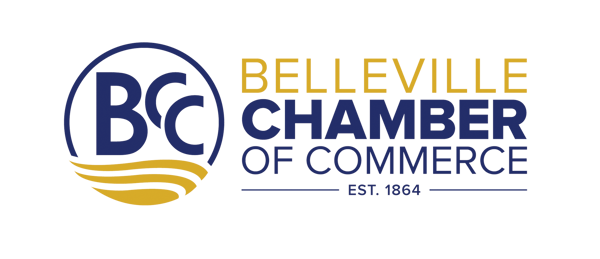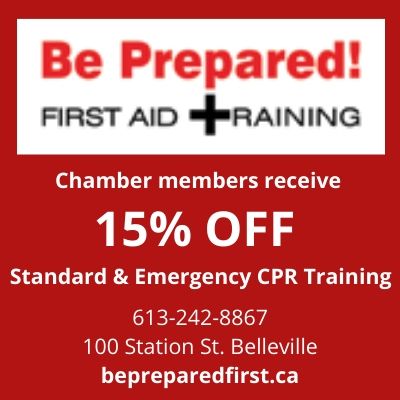Chamber News
Stay informed and discover the latest happenings in Belleville, Ontario with the Belleville Chamber of Commerce News.
Now that the holiday shopping season is over, what can you do to help your business thrive? Here are five areas you should evaluate and tips for keeping your business healthy during the slow season.
For retailers, "What do I do when Christmas is over?" is a question that comes to mind as the retailer enters January of the new year. It is on the mind of every retailer who lives and survives on Christmas business. For some businesses, because they don’t have their busy season during the December, the question may not arise. However, every business has its big selling season - 80% of their business is done in 20% of the year. If not an annual event, it could be during the economic cycle when business is good -- an every five, six, or seven year happening. Every business has its Christmas... and every business has its after-Christmas slump.
A retailer doesn't have to work too hard to make a profit when the economy is on the upswing. I say "too hard" because when business slows down, what was thought to be hard work no longer does the job. When business is good, people seldom ask, "What will I have to do when Christmas is over?" It is during good business times that businesses should have been looking for ways to make the business turndown less of a turndown. Unfortunately, it does not happen that way.
So, what can business do? They can study what they are doing in two areas. The first is to look at and analyze the firm's five inventories. The second is to inaugurate "Business Calisthenics" -- practices in business that keep business healthy.
Every business has five inventories, although most people don't regard all five as inventories. These five inventories are:
1. Its outputs of products, services, ideas, and information. Are there places to make sales that we have overlooked?
2. Its staff and salary structure. These are usually looked on as costs. They should be considered inventory. Like inventory, the staff is an asset and their activities should be generating a profit. If not, why not? Every two weeks the firm gets a shipment of inventory (the staff's activities) they have to pay for. An inventory of a too-low-of-a salary-structure may mean the firm doesn't have the best people for the job and/or may have a dissatisfied staff which isn't working up to their potential. Too high a salary structure means that the cost of the inventory prices them out of the market.
3. Its equipment, supplies, and suppliers. Normally, these are treated as capital or ongoing expenses. If any one of these categories is not generating more than it is costing, then why buy/use them?
4. Its policies and procedures. Seldom does anyone look upon these as inventory. In many cases, they hinder the sales process rather than promote it. Since all profits are generated by sales, policies and procedures are inventory and should be generating a profit.
5. Its customers. A firm's most important inventory! It is not what your firm has been selling them that's important, it's "What haven't they been buying from the business?" that's important. A business can only grow two ways: sell to more new customers and/or sell more to current customers. Which is more cost effective?
Each inventory has to be bought correctly, then marketed (deciding to whom and how something is to be presented), presented and sold both internally to those working in the firm and externally to the firm's customers. When each inventory generates a profit, management can then do what they are supposed to do -- manage the profits generated by each inventory so these profits will not be squandered and can be reinvested in the business's five inventories.
The second activity to start is "Business Calisthenics" by making notes of information that will become vital inputs for the decision making process. Everyone should be looking for the following information to make note of:
A. What question was asked that had not been asked before? If more than one customer asks the question, it means there is a need to have it answered in the marketplace.
B. What product, service, or information did a customer ask for that the firm doesn't normally offer? People will ask for something when they believe the firm might be able to supply it. If enough people ask, it means that there may be a market.
C. What presentation (media, display, personal) did I/we make that did not conclude in a sale? What should I/we have done in order to make the sale? Not every presentation results in a sale, but every presentation should strive toward that end. Great salespeople don't make every sale; they just don't make the same mistake twice.
D. What products were returned and, what was our customer's complaint? What is important for the business is to understand the situation and then discuss the solution. Having something returned or receiving a complaint is an opportunity to improve the business; the second time it's a sign of indifference to the customer!
E. What do we share with our competitors? What do we do better and/or differently? What do they do better and/or differently? (One can never assume customers know that you offer many of the same things your competition offers.) How do we get this information to our prospective and current customers?
F. What do I/we offer that our competitors do not offer or that I/we do better than they do? What do they offer that I/we don't offer or what do they do better than I/we do? What can I/we do to capitalize on our strengths and emphasize what they don't offer or don't do well?
G. What have I been offered where I did/didn't like the way it was presented or the way I was treated? Are you doing the same things to what you offer and your customers? If so, what can or should we be doing to better serve your customers and/or present our products and services?
It is management's job to develop a program where everyone can bring in the results of their exercises without the fear of job security, political reprisal or embarrassment.
When business slows, all businesses have the opportunity to look at their business in a different way. The results of studying the five inventories and analyzing the answers generated by Business Calisthenics will help in counteracting the recession and will help you be better prepared for the time when the economy turns around.
This article is adapted from the author’s book “The Elements of Selling.” It is available on-line as a soft cover book and digital versions from Sellingselling.com.
© 2013 Alan J. Zell, Portland, OR
All rights reserved
Alan Zell is Ambassador Of Selling at Attitudes for Selling. Mr. Zell offers seminars, workshops, consulting for business, industry and academic groups and consulting for individuals, business, industry and academic groups by e-mail. For further information please visit his website at www.sellingselling.com.














.jpg)

